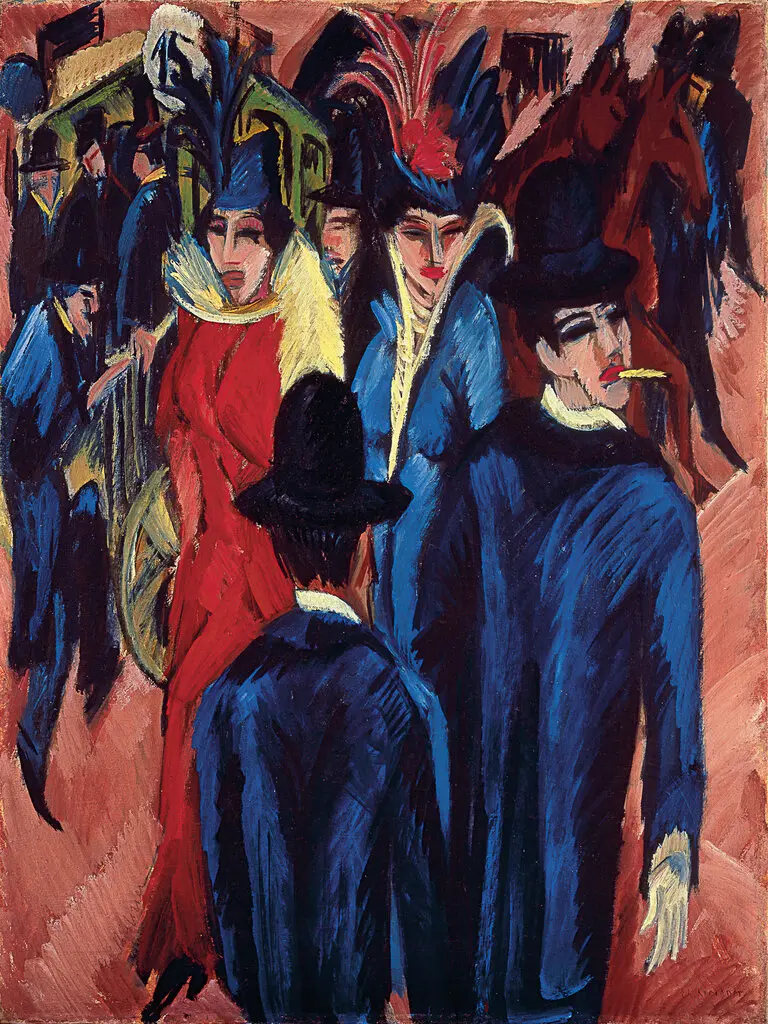News:
David Rowland, Who Won Back Looted Art for Jewish Heirs, Dies at 67
By Catherine Hickley
As a lawyer, he worked on behalf of the families of Jews who had been persecuted by the Nazis to recover artworks, some housed in pre-eminent museums.
David Rowland in an undated photo. “The hallmark of David’s professional engagement was perseverance,” a colleague said
David Rowland, a lawyer who secured the recovery of hundreds of looted artworks for the heirs of Jewish collectors who had been persecuted by the Nazis, challenging some of the world’s leading museums in doing so, died on Aug. 15 at his home in Manhattan. He was 67.
The cause was a sudden heart-related illness, his sister Elizabeth Rowland Gagne said.
Among Mr. Rowland’s high-profile successes was the 2006 recovery of “Berlin Street Scene,” a 1913 painting by Ernst Ludwig Kirchner, from the Brücke Museum in Berlin. And in 2020 he secured the return of 200 prints and drawings by Henri Matisse, Edvard Munch and Marc Chagall, among other artists, from the Kunstmuseum in Basel, Switzerland.
The Basel restitution followed more than a decade of persistent petitioning by Mr. Rowland on behalf of the heirs.
“The hallmark of David’s professional engagement was perseverance,” said Svetlana V. Petroff, his longtime business partner and friend. “He persevered over time and against adversity.”
Mr. Rowland had met Ms. Petroff in law school, though both were working at Röhm International, a New York law firm, when Mr. Rowland left in 1989 to set up a practice on Park Avenue. Ms. Petroff joined him in 1990, to form Rowland & Petroff.
Mr. Rowland focused initially on real estate restitution and compensation claims by German Jews and their descendants in eastern Germany after the fall of the Berlin Wall.
“The wall came down just as David was opening his practice, and he recognized the opportunities,” said Julius Niesert, an associate at Rowland & Petroff in Berlin.
As the number of claims for Jewish homes and businesses in Germany began to dwindle, Mr. Rowland turned his attention to recovering Nazi-looted art. It is a field in which the law can fall short in achieving justice for heirs: Claimants are frequently foiled in court by technical barriers, such as statutes of limitation.
“Cases can take a very long time, and you don’t have access to regular legal tools,” Mr. Niesert said. “You are frequently operating outside normal legal parameters in a ‘soft law’ area.”
 Mr. Rowland’s first major success was securing the return of Caspar David Friedrich’s 1824 painting “The Watzmann” to the heirs of its original owner from a Berlin museum, which then purchased it back from them.
Mr. Rowland’s first major success was securing the return of Caspar David Friedrich’s 1824 painting “The Watzmann” to the heirs of its original owner from a Berlin museum, which then purchased it back from them.
Mr. Rowland started working in art restitution around the time dozens of countries endorsed, in 1998, the Washington Principles, a set of international, nonbinding guidelines on returning Nazi loot housed in public collections. He was among the first U.S. lawyers to focus on Nazi-looted art, and he championed the rights of Jewish art claimants beyond his clients, writing articles and attending conferences to promote their cause.
His first major success was securing the return of Caspar David Friedrich’s 1824 painting “The Watzmann,” one of the artist’s best-known works, to the heirs of Martin Brunn, its original owner. Mr. Brunn, who was Jewish, had sold the painting in 1937 to finance his flight to the United States but never received the sale revenue. The Nationalgalerie in Berlin returned it to his heirs, then purchased it back from them in 2003.
The restitution of “Berlin Street Scene,” an equally famous painting, sparked an uproar. Mr. Rowland represented the heir of Alfred Hess, who ran a shoe-manufacturing business in the eastern German city of Erfurt before World War II. The family had one of the most comprehensive collections of German Expressionist art of that time, with about 4,000 artworks.
Tekla Hess, Alfred’s wife, sold the painting to a Cologne-based collector in 1936, but researchers concluded that she had sold it under duress and that it was unclear whether she had actually received any payment.
Nonetheless, some Germans did not view “Berlin Street Scene” as a case for restitution. An opinion column in a German newspaper, Frankfurter Allgemeine Zeitung, went as far as to accuse “unscrupulous, slick lawyers in the U.S.” of “talking about the Holocaust but meaning money.”
But the Berlin state prosecutor concluded that keeping the artwork in the Brücke Museum without returning it “would reduce the cultural and historical meaning of the work for the general public, and the ethical and moral value of this cultural treasure.”
After its restitution, Ronald Lauder, an heir to the Estée Lauder cosmetics fortune, purchased the painting for $38 million at a Christie’s auction in New York in 2006. “Berlin Street Scene” now hangs in the Neue Galerie, the Manhattan museum that Mr. Lauder opened in 2001.
 The 1913 painting “Berlin Street Scene,” by Ernst Ludwig Kirchner, was recovered by Mr. Rowland — though not without controversy — and now hangs in the Neue Galerie in New York.
The 1913 painting “Berlin Street Scene,” by Ernst Ludwig Kirchner, was recovered by Mr. Rowland — though not without controversy — and now hangs in the Neue Galerie in New York.
Many of Mr. Rowland’s clients could not afford to pay hourly fees, so he worked on a contingency basis: They paid him if they won, but not if they lost.
“David took on cases he believed in that appeared to be unwinnable, and persisted through his moral conviction where many other lawyers would have jumped ship,” said Raymond J. Dowd, who also handles claims for Nazi-looted art as a partner at the international firm Dunnington Bartholow & Miller.
One of Mr. Rowland’s longest-running battles was the recovery of the collection of Curt Glaser, a renowned Jewish museum director and art critic who sold hundreds of works at two Berlin auctions before fleeing Nazi Germany in 1933.
Mr. Rowland began working for Glaser’s heirs more than 20 years ago and recovered art from more than a dozen private collectors and museums, including the Museum Ludwig in Cologne and the Kunstmuseum Basel. At his death he was still working to reclaim Glaser’s paintings from the Metropolitan Museum of Art in New York, the Museum of Fine Arts in Boston and the Kunsthaus Zurich.
“I always valued his ability to communicate to us that he cared,” said Bettina Basanow, one of Glaser’s heirs, who lives in Denver. “It wasn’t just business. We appreciated him as a friend and lawyer.”
David John Rowland was born in New London, Conn., on March 21, 1956, to Barbara Ann and John Robert Rowland. He spent most of his childhood in nearby East Lyme, where he swam, fished and raced a sailboat in Long Island Sound.
He attended Trinity College in Hartford, Conn., and graduated in 1978. Having learned German in high school, he spent his junior year in Vienna.
After graduating from New York Law School in 1983, he returned to Europe while studying at the McGeorge School of Law at the University of the Pacific, spending some months at the University of Salzburg and working for a law firm in Munich. His fascination for the German-speaking world greatly shaped his career and took him frequently to Berlin.
In addition to his sister Elizabeth, Mr. Rowland is survived by his mother, Barbara Ann Rowland; another sister, Leslie Rowland Jacques; three nieces; and three nephews.
Not only did he help to recover art, Mr. Rowland also avidly appreciated it. He was a member of the National Arts Club in New York, and in Berlin, where he kept an apartment, he set up a gallery with his friend Frank Kutschera, an architect. They called it Galerie Rowland Kutschera.
A correction was made on Sept. 1, 2023:
An earlier version of this obituary misstated Mr. Rowland’s fee-paying arrangement with his clients, many of whom could not afford to pay hourly fees for his legal services. He worked on a contingency basis (they paid him if they won a case, but not if they lost), not “on consignment.”
https://www.nytimes.com/2023/08/31/arts/david-rowland-dead.html


